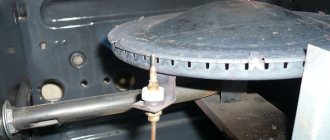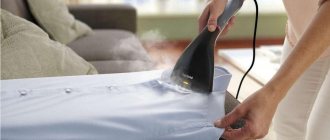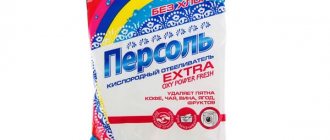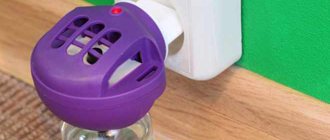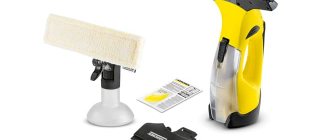When choosing a home coffee maker, you have to prioritize what is more important: saving time, ease of preparing a drink and maintaining the unit, or the ability to brew coffee according to a specific recipe with a predictable result. It also matters how many family members are waiting for their cup of coffee at the same time. Let's look at different types of coffee makers and their features.
Coffee makers without electric heating. Coffee makers that do not require an electrical connection:
- cezva (Turk);
- French press;
- pour over;
- Chemex;
- wicket;
- geyser coffee makers.
Cezva (Turkish)
Cezve (the name comes from the Turkish Cezve) is a thick-walled, conical-shaped container with a wide bottom and a narrow neck, on a long handle, made of copper, steel or ceramics. A mixture of ground coffee, sugar, various spices, salt (depending on the recipe) is poured with water and heated on a stove or in a tray with fine sand, without allowing it to boil.
For brewing in Turkish coffee, the finest grind coffee is used. This type of coffee maker produces Turkish or Arabic coffee best. Nowadays there is a large selection of such coffee makers in stores. Along with them, they sell models with electric heating, and there are also special ones designed for stoves with an induction operating principle.
Cezve
Results
In order to choose a suitable coffee machine, you need to first decide what you want from it. What kind of coffee and in what quantity should she be able to prepare? Are you willing to hand wash the internal parts? Do you really need several degrees of grinding, a heated cup and a second boiler?
Having answered these questions, it will be easier for you to navigate among the wide range, choose “the one” and at the same time not spend money on unnecessary functions.
Tell me, would you like to buy a coffee machine? Or maybe you already have it? Then share your experience of selection and use.
French press
This type of coffee maker is suitable for brewing not only coffee, but also tea or medicinal herbs. A French press is a glass, ceramic or stainless steel glass with a tight-fitting lid. A stainless steel mesh filter is inserted inside, mounted on a rod and equipped with a comfortable handle.
Ground coffee is poured into the bottom of a heated glass, poured with hot water and closed with a lid, after 2–2.5 minutes the drink is ready. The grounds are pressed with a filter, and the filtered liquid is poured into a preheated cup. In any cafe you can order tea or coffee from a French press and personally observe its preparation.
French press
conclusions
To summarize, it is worth noting the main features of each coffee maker :
- Drip – ideal for making delicious black coffee.
- Rozhkovaya - will help to brew both espresso and delicate cappuccino.
- Capsule is an expensive device that will appeal to you for its interesting design and ability to experiment.
- A geyser room is a budget option that allows you to get a quality drink in a matter of minutes.
- An electric Turk is a convenient device for brewing coffee at home or in the office.
- Regular Turkish coffee - suitable for lovers of classic rich coffee.
- The pod is a compact coffee maker for quick and clean preparation of the drink.
Purover
The pour-over method of making coffee is compared to the tea ceremony in terms of entertainment. Medium grind coffee is used for brewing. You will need equipment from Hario: a pour-over funnel, into which a filter made of paper, fabric or fine metal mesh is placed and coffee is poured. Water is heated in a kettle with a long and narrow spout. In a thin stream, moving in a circle, pour coffee powder onto the filter. The finished drink is collected in a container on which a filter is installed.
Purover
Another type of pourover is Kalita Wave. Having passed through a corrugated filter placed in a container with transverse grooves, the drink acquires a richer taste and aroma than that obtained from Hario pourover.
Kalita Wave
Chemex
The method of brewing a Chemex is similar to a pour-over. In 1941, this idea came to the mind of an American chemist. He installed a glass funnel on the flask with spouts, and secured both parts with a leather strip. The hourglass-shaped decanter looks impressive, but is very fragile and easy to break.
Due to the fact that the filter fits tightly to the smooth walls of the funnel, the contact of hot water with ground coffee is short-lived. The drink turns out more watery and less aromatic than in pour over.
Chemex
The Arabica variety is most suitable for brewing coffee in Turkish coffee, French press, pour over and Chemex: the drink has a velvety taste, without unnecessary bitterness.
Geyser coffee maker (coffee pot)
On store shelves there are long-familiar geyser coffee pots. The world owes their appearance to the Italian entrepreneur Alfonso Bialetti. The first geyser-type coffee pot, Bialetti Moka Express, model 1933, is still produced almost unchanged. This type of coffee maker, suitable for gas and wood stoves, has a traditional octagonal shape.
The coffee maker consists of three parts:
- the lower bowl is for water, the upper bowl is for collecting the finished drink, both have an octagonal shape;
- Between them, place a small perforated container for ground coffee with a narrow tube reaching to the bottom of the lower bowl.
Electric models differ from conventional ones intended for stoves only in that a heating element (heating element) is built into the bottom of the lower bowl.
Principle of operation. Under excess steam pressure, water from the lower part flows through the coffee filter into the upper bowl, where the finished drink is collected.
Water is poured into the lower bowl, made of food-grade aluminum and equipped with a bypass valve, just below the mark (below the valve). Pour medium-ground coffee into the intermediate container, lightly compact it with a tamper or a teaspoon so that the filter holes do not become clogged, and screw on the upper bowl. Some models have a glass window to monitor the progress of the process.
After almost all the water has passed through the filter, the finished product is collected in the upper bowl, then the drink is poured into cups. Coffee brewed in a geyser coffee maker is filtered and no sediment gets into the cup.
There are special models for induction cookers, for example, Bialetti Moka Induction, Bialetti Musa or Venus. When choosing, you need to pay attention that the lower bowl is made of a ferrimagnetic alloy (stainless steel) and has a flat bottom (at least 10–12 cm in diameter).
Geyser coffee maker
If the coffee pot is made entirely of aluminum and cannot heat up on an induction burner, it makes sense to purchase an adapter made of steel.
Advantages:
- the drink does not contain sediment;
- Not only coffee is brewed in a coffee maker: tea, medicinal herbs;
- Thanks to the design features of the coffee maker, the drink will not run away or burn.
Flaws:
- you always have to cook the same number of portions, even if so many are not needed: the filter must be loaded completely;
- It is not advisable to wash aluminum parts in the dishwasher: the metal will lose its protective oxide layer and lose its shine.
Products from Italian manufacturers are excellent in quality and design. When choosing a coffee maker for your home, you should focus on the number of cups of coffee that are prepared at the same time (one serving is 50–60 ml).
Characteristics and brands of geyser electric coffee makers
| Brand | Power, W | Tank volume For water, ml | Number of servings, cup (50 ml) | Peculiarities |
| Bialetti MOKA EASY TIMER | 365 | 120 | 3 | Built-in timer; sound signal; maintaining the temperature of the drink for 30 minutes |
| EMKM 6 Alicia, Delonghi | 450 | 250 | Up to 5 | Maintaining the temperature of the drink for 30 minutes; presence of auto shut-off function; swivel bottom |
| Rommelsbacher EKO 376/G | 350 | 300 | Until 6 | Availability of auto shut-off function; there is a compartment for the cord; |
| Bialetti Venus Elegance (Without electric heater) | — | 450 | 9 | Suitable for induction cookers; material – stainless steel; bottom diameter – 11.5 cm |
Recommendations for choosing a coffee machine for your home
Which coffee maker is best for home? How to sort through the range of coffee machines and settle on the most suitable one? First of all, the choice of coffee maker will depend on what type of coffee drink is preferred - strong espresso, milk drinks (Americano or latte), whether it will be possible to pamper yourself with a variety of coffee flavors, as well as tea or cocoa. The quality of the drink will depend on the coffee preparation system, or more precisely on its technical characteristics.
Equally important is assessing the size of the device . A simple coffee maker will take up little space, but a multifunctional coffee machine will need more space for ease of use.
The variation in the cost of coffee machines is also quite large . An ordinary home coffee maker can differ in cost from a semi-professional coffee machine by several dozen times. And each of these systems will prepare different coffee.
When purchasing a coffee machine, the following features are taken into account::
- brewing method (espresso or drip);
- method of heating water (storage or flow system);
- material of manufacture (ceramics, steel);
- productivity (power, volumes of water and coffee containers);
- additional functions (drink strength adjustment, automatic cleaning, dispenser, etc.).
Differences between coffee machines and coffee makers
Even though the main function of the devices is the same - making coffee, the ways of implementing this task differ .
Comparing a coffee maker and a coffee machine according to the main indicators will help you determine which device is suitable for home use - simpler and cheaper or more complex and more expensive :
- principle of preparing the drink;
- control;
- number of possible recipes;
- settings;
- price.
Coffee makers are characterized by a variety of designs , small sizes, limited but reliable functionality. The operating process is simple. When preparing the drink, already ground coffee is used. The affordable price of the devices is attractive (from 1,000 rubles to 10,000 rubles). The pressure in the systems is from 5 to 19 bar.
Coffee machines are characterized by a greater number of functions , including grinding coffee beans. Management is much more complicated, and the price tag starts from 20,000 rubles. In most machines, steam or water passes under pressure through a portion of ground grain. In coffee machines the pressure is 15 bar or more.
Important! The main difference between coffee machines and coffee makers is the variety and complexity of the device’s functionality, which is regulated by programmable settings.
Why is a coffee maker better for your home?
With large volumes and high productivity, the coffee machine is an ideal choice for coffee shops, bars and large offices. A budget-friendly, easy-to-use coffee maker that takes up little space remains a convenient option for home use.
To prepare espresso , a pump or capsule coffee maker is preferable, and to obtain a rich coffee extract from high-quality coffee beans, it is worth purchasing a container for alternative preparation - a pour-over, a Chemex or a regular drip coffee maker.
Drip (filtration) coffee maker
If you need to quickly prepare several cups of coffee at once for breakfast, the easiest option is to use an electric filter coffee maker.
The prototype of modern drip coffee makers appeared in 1800, since then the operating principle has remained the same. It is based on the method of preparing a flavored drink by straining hot water through a layer of ground coffee beans, invented by the Parisian Archbishop Jean-Baptiste de Bellois.
The design of the device changed over time, different materials and methods of heating water were used, new modifications of filters appeared, but the operating principle remained unchanged.
A removable funnel with a nylon filter is supplied with the coffee maker. It is not eternal, as many people think, but can withstand up to 60 brews. The “gold filter”, essentially the same nylon filter, but treated with a metallized titanium nitride coating, will last longer. Reusable filters do not require additional costs, but require constant cleaning.
There is an alternative option - disposable paper filters, invented by German housewife Melitta Benz. A blotter from a school notebook was used. The Melitta company for the production of coffee filters still exists, different standard sizes have appeared, and new paper processing technologies have been mastered. Disposable filters are practical and do not cause unnecessary trouble, but their purchase is an additional expense.
Principle of operation. Water, heated by the built-in element in the boiler almost to a boil (to a temperature of 85–95 ° C), slowly flows by gravity, drop by drop, into the filter with ground coffee. The hot extract from the coffee powder is poured through a filter into a flask standing on a heated platform. The result is a weak black coffee that Americano lovers will appreciate.
Instructions
- Water is poured into the reservoir for the planned number of cups of the finished drink (100 ml per cup) in accordance with the capacity of the receiving flask.
- Install a reusable (nylon) or disposable (paper) filter and add freshly ground coffee at the rate of 7–8 g (1–1.5 tsp) for each cup.
- Turn on the device, and after 3-5 minutes the ready-made coffee will begin to flow into the receiving flask.
Advantages of a drip coffee maker:
- the presence of an anti-drip protective mechanism: if the flask is removed to pour the finished drink into a cup, the liquid does not flow out of the filter;
- heating the container for the finished drink thanks to the presence of a heating element built into the platform;
- the volume of finished coffee is limited only by the capacity of the flask;
- Easy maintenance: just throw away the disposable filter along with the used coffee powder, or shake out the contents of the reusable one and rinse it with water.
Flaws:
- ready-made coffee is not strong and has a strong aroma;
- You can make only one type of coffee - Americano;
- additional costs for the purchase of disposable filters.
When choosing a drip coffee maker, it is better to give preference to a model with low power: in the range of 600–800 W. The lower the power of the device, the more time it will take to filter, and this will have a positive effect on the taste of the drink.
Drip coffee maker
Characteristics and brands of drip coffee makers
| Brand | power, kWt | Tank volume For water, l | Number of servings cup (50 ml) | beverages | Grinding degree | Peculiarities |
| Maxwell MW-1650 | 600 | 0,6 | 12 | Americano | average | Maintaining the temperature of the drink for 30 minutes; presence of auto shut-off function; ready-to-drink dispenser for 2 cups; anti-drip system |
| Redmond SkyCoffee RCM-1508S | 550 | 0,6 | 12 | Maintaining the temperature of the drink for 30 minutes; presence of auto shut-off function; remote control via Bluetooth v4.0 | ||
| Philips HD7434/20Daily Mini | 720 | 0,6 | 12 | Indication of switching on and water level; anti-drip system |
Additional functions
"Drop-stop"
This function allows you to stop the preparation of a drink if you remove the coffee pot or cup from the tray. Especially useful in drip models.
"Timer"
The “timer” function works like a delayed start, and allows you to set the start time of the device.
"Fortress Control"
A useful “trick” for families and groups with different preferences for coffee strength.
"Transfusion protection"
Thanks to this function, the device will automatically turn off when the coffee pot is full and there is still water in the reservoir.
"Auto-heating"
Automatic heating will keep the liquid warm for 30 minutes after the end of the cooking process.
"Water indicator level"
A function that allows you to select the optimal saturation of the drink (ratio of grains and water).
Carob (holder) coffee makers
This common type of coffee maker goes by several names: espresso, carob, holder (holder - horn, portafilter).
The lucky owners of such equipment have the opportunity to pamper themselves and their friends with coffee drinks that are prepared on the basis of the canonical espresso: latte, cappuccino, macchiato, Viennese coffee.
Carob-type coffee makers are divided into 2 types:
- boiler rooms (pumpless), developing pressure within 2–4 bar;
- pump-type (in household cars a vibration pump is installed), capable of increasing the steam pressure to 15 bar.
To brew the right espresso, you need a coffee maker that operates under high pressure, so for connoisseurs of high-quality drink, the second option is more suitable.
An important element is the horn (portafilter): it is a holder equipped with a comfortable handle and a guide for the stream of the finished drink. More often there are models with two guides, this makes it possible to fill two cups at the same time.
Coffee maker holder
The holder contains a filter (with a diameter of 50–54 mm), into which a portion of the finest grind coffee is poured. The filter is manufactured in two versions: with a single or double bottom. Typically, the device is equipped with two different filters (for one- and two-cup portions of ground coffee), a measuring spoon, and a tamper for forming coffee tablets.
You can also buy special pods for carob machines - hermetically sealed bags of ground coffee and pressed into a tablet. The matching pods, marked ESE (Easy Serving Espresso), have a diameter of 44 mm and contain 7 g of coffee. The taste and aroma of a drink brewed from a tablet will not be as tempting as from freshly ground coffee, but the preparation process is easier and the cleanup is faster.
Tampered coffee
Coffee makers of this type have a water reservoir, and many models have a platform for heating cups.
To prepare milk drinks and coffee cocktails, coffee makers are equipped with a cappuccino maker - a device designed for frothing milk. They come in automatic and classic (panarello).
Inexpensive models of espresso machines usually have a mechanical cappuccino maker. To obtain milk foam, the nozzle is immersed in a jug (pitcher) with cold milk and whipped with steam.
An automated cappuccino maker is installed on expensive models: milk from any container into which the tube is lowered is drawn into the cappuccino maker. Inside it is mixed with steam and served directly into the cup, along with the coffee.
Operating principle of carob coffee makers
In boiler-type coffee makers, water is heated to 100 ºС and passes in the form of steam through a filter filled with ground coffee, which does not have the best effect on the taste of the finished product.
In pump coffee makers, water is heated to 90–95 ºС (the most suitable temperature for coffee extraction) and, under high pressure developed by a built-in pump (about 8 bar), is filtered through a layer of compressed coffee powder. The saturated extract condenses at the bottom of the filter and drains into a cup. The pressure indicator is about 15 bar, this is the limit value for pump-type machines.
Carob coffee maker
Instructions
- Pour purified water into the tank. The capacity of the water container for different models varies from 200 ml to 1.5 liters.
- Pour freshly ground coffee into the cone. For espresso, use finely ground espresso powder (7–8 g, or 1–1.5 tsp) and compact it with a tempera.
- Place the portafilter on the seal of the distribution group and tighten the shutter tightly so that the horn does not break off under high water pressure (up to 8 bar).
- Turn on the heating, when the indicator light indicates readiness, press the button (or turn the switch) and start dispensing the finished coffee into the cup.
- If you need a drink with milk or whipped cream, it is prepared using a cappuccino maker.
- Each time after brewing coffee, you need to shake out the spent tablet from the filter and wash it under running water.
Advantages:
- It takes 1–2 minutes to prepare one serving of coffee. The greater the electrical power of the device, the less time is required;
- Various coffee drinks are prepared based on espresso: latte, cappuccino and many others;
- saving coffee;
- the ability to use coffee in ESE format pods (if the strength of the drink is not important, but there is a desire to simplify the preparation process).
Flaws:
- Mostly fine grinding of espresso is suitable, you will need an electric burr grinder;
- A boiler (without a pump) machine brings water to a boil, which degrades the quality of the espresso.
Characteristics and brands of carob coffee makers
| Brand | Power, W | Pressure, bar | Water tank volume, ml | Roasting degree | Grinding degree | Beverages | Peculiarities |
| DeLonghi EC 5 Boiler model | 800 | 3,5 | 400 | average | small | Espresso; cappuccino; | Manual cappuccino maker |
| Vitek VT-1519 BK | 1050 | 15 | 1,5 | Espresso; cappuccino; hot chocolate; Hot milk | Manual cappuccino maker: steam supply tube; "Fast steam" system; heating cups; |
A heating element
The coffee maker may have a boiler or thermoblock as a heating element.
Boiler
Boiler
A more popular heater. In it, the water warms up at the same time. A good option if you plan to often make several servings of coffee at once.
Thermoblock
Thermoblock
Looks like a spiral through which water passes in portions, heating up. This way, the water heats up faster, but it’s better to cook one cup at a time.
Pod coffee makers
In addition to the above types of coffee makers, there are pod machines that work exclusively with filter bags produced by coffee maker manufacturers.
Coffee pods
The principle of operation is practically no different from carob pump coffee makers, with the difference that you cannot put unpackaged ground coffee into the pod’s horn.
Advantages:
- the drink turns out with the same taste, because the sealed packaging always contains the same amount of ground coffee and its aroma is preserved for a long time;
- Compared to an espresso coffee maker, the preparation process and maintenance are simpler and take less time.
Flaws:
- the variety of flavors of the finished drink is limited by the manufacturer’s range of filter bags suitable for a specific coffee maker;
- Coffee pods are much more expensive than coffee beans.
- For home use, a regular espresso coffee maker is more suitable: there are more opportunities for experimenting with recipes, and the cost of regularly purchasing beans or ground coffee is much less.
Content
- Types of coffee makers and differences from coffee machines
- Geyser coffee maker
- Drip coffee maker
- Espresso coffee maker (carob)
- Capsule coffee maker
- Turkish coffee maker
- Automatic coffee machines
- Display and programming options
- Types of coffee drinks
- Cleaning and care
Those who drink only instant coffee are unlikely to know the real great taste of a thick and aromatic drink brewed from ground coffee beans. But it’s easy to prepare – just buy a coffee maker or coffee machine. In order not to make a mistake in your choice, and the purchase will bring you only joy, let's figure out what types of coffee makers there are.
Capsule coffee makers (coffee machines)
Experience in selling pod coffee makers has shown that it is more profitable to sell consumables rather than devices. Manufacturing companies perfected this idea, and as a result, capsule coffee machines appeared on the world market. The cooking method was patented back in 1978. Since 1980, these devices and capsules for them have been produced by four well-known manufacturers: Nespresso, Cremesso, Tassimo and Dolce Gusto.
Sellers call this class of kitchen appliances coffee machines, due to the fact that their drink preparation process is even more automated than in pod coffee makers. All that remains is to manually place the capsule and pour water into the reservoir; some models have a compartment where the used coffee automatically goes in a beautiful package.
Smart machines have “learned” to read a barcode printed on sealed aluminum foil packaging and containing information about the method of brewing a specific type of capsule. Therefore, choosing a mode is reduced to pressing the “Start” button. The process of preparing morning coffee takes just a few seconds, and maintenance of the machine is kept to a minimum. For those who do not like to experiment with recipes and value predictable results, capsule coffee makers are ideal. They take up little space, are beautifully designed, fit well into a small kitchen, and their cost is even lower than traditional carob coffee makers.
Operating principle of capsule coffee makers
Extraction of aromatic substances using hot water under high pressure (built-in pump develops pressure from 15 bar). Fundamental changes affected only consumables. Capsules contain less ground coffee than pods, and their cost has increased significantly compared to the latter.
The variety of flavors of the finished drink has increased, and the buyer now has apparent freedom of choice. Before purchasing a capsule coffee machine, you should familiarize yourself with the range of each manufacturer and choose the appropriate option. Depending on the market situation, prices often change, costs rise, and switching to cheaper capsules from another brand is not always possible.
Nespresso coffee machines
The machines of this system are the brainchild of the Swiss company Nestle Nespresso SA; they appeared on the market in 1986, earlier than others. They are made by the famous companies DeLonghi and Krups.
Nespresso
Advantages:
- Consistently high build quality;
- compact, stylish design;
- a large assortment of coffee drinks: 26 types of capsules, including 6 decaffeinated;
- ready-made drinks from one type of capsule always have a familiar taste;
- the possibility of replacing original, rather expensive capsules with alternative ones. They are produced all over the world, and even domestic ones have appeared.
- Manufacturers claim that it is possible to brew regular ground coffee.
Flaws:
- Nespresso system machines are more expensive than similar ones;
- higher cost and limited sales of original capsules than competitors;
- making coffee with milk is provided only in expensive models with a cappuccino maker;
- There are no capsules with tea and chocolate in stock.
Cremesso coffee machines
Capsules for machines of this system are produced by the Swiss company Delica; coffee machines are sold under the same brand.
Cremesso
Advantages:
- stable taste of drinks, the manufacturing company controls the process of manufacturing capsules from growing and collecting raw materials to releasing finished products;
- stylish design;
- the pump develops high pressure (up to 19 bar);
- quick preparation process: it takes 15 seconds to warm up, 20–30 seconds to serve the finished drink;
- In addition to coffee, there is the possibility of brewing tea; there are 4 types of capsules in the assortment.
Flaws:
- the palette of coffee flavors is limited to classics and has only 11 types;
- machines and capsules of the Cremesso system are more difficult to find in stores;
- Only expensive car models have cappuccino makers.
Coffee machines of the Dolce Gusto system
This system was created in France by Nestle dolce gusto, RPC. Coffee machines and capsules are produced under the Krups brand. They are more affordable than products from the Swiss Nespresso system, but the quality and technical characteristics are significantly lower than those of the prototype.
Dolce Gusto
Advantages:
- the palette of flavors includes 25 different drinks, including coffee, tea and cocoa;
- the cost of capsules is lower than that of competitors;
- low price for coffee machines;
- cappuccino or latte are prepared even on machines with a minimum set of functions.
Flaws:
- the build quality of the devices leaves much to be desired;
- coffee content in capsules is only 6 grams;
- Dairy drink capsules contain milk powder, and the price of one cup is relatively high;
- The capsules from which mocha, cortado, and coffee with milk are prepared contain instant coffee instead of ground coffee with chemical additives: stabilizers and emulsifiers.
Tassimo coffee machines
The capsule coffee brewing system was developed by the American company Kraft Foods. It produces coffee machines together with the famous company Bosch.
Tassimo
The design of coffee machines has significant differences from other systems. Due to the fact that capsules for Tassimo are larger than analogues intended for other systems and are made in the form of disks, and the coffee powder in them is not compressed, the pressure developed by the built-in pump (3.3 bar) is sufficient to prepare high-quality espresso.
Tassimo machines are equipped with a Brita filter for softening and purifying water, so it is acceptable to use tap water, but bottled water is still the best option.
Advantages:
- an increased dose of coffee (capsules contain 9 grams) guarantees a rich taste and aroma;
- any, even the simplest model is suitable for preparing both classic and dairy drinks: cappuccino, latte, cocoa;
- relatively low prices for capsules and coffee machines.
Flaws:
- The range of capsules includes only 7 types of black coffee;
- you have to frequently wipe the barcode scanner;
- Quite expensive capsules for dairy drinks contain milk powder;
- in Jacobs Café au Lait (coffee with milk) capsules, natural coffee is replaced with instant coffee.
With all the advantages and obvious disadvantages, it is advisable to buy a Nespresso or Cremesso coffee machine for your home: they have a higher build quality. Experts recommend paying attention to the possibility of purchasing suitable capsules; the range of flavors and financial capabilities matter.
Display and programming options
Coffee machines are usually equipped with an informative display. It displays the maximum useful information for the user: the current operating mode, the state of the device and the actions that need to be done. For example, it’s time to add water or coffee, remove used coffee from the waste compartment, or turn on the cleaning mode of the device. All machines with a display have a programming function. You can, for example, set the filling volume for different cups, the coffee temperature, the grinding of the next portion of beans to prepare the next drink, and much more. By combining different settings, you can create your own recipe for a unique, invigorating coffee.
Coffee machine Bosch TES50621RW VeroCafe Latte Pro
Additional boiler and fast steam function
To prepare coffee, the water in the coffee machine is heated to the optimal temperature in a special boiler. The same boiler is also responsible for generating steam for cappuccino. Switching from one function to another takes 2-3 minutes, which is not always convenient. To speed up this process, some coffee machines have an additional boiler, while others have a rapid steam function. In the first case, one boiler heats water for coffee, and the second creates steam for frothing milk, and they are always ready for use. In coffee machines with one boiler, thanks to the quick steam function, changing between water/steam modes can happen in just a matter of seconds.
Possibility of coffee dosage
To adjust the coffee strength to your liking, coffee machines have a ground coffee dosage function. Depending on the machine model, a single portion can be adjusted from 6 to 13 grams. As the dosage increases, water passes through the coffee layer more slowly and with increased pressure, making it stronger and richer.
Possibility to adjust the degree of coffee grinding
Automatic coffee machines provide the ability to independently adjust the degree of grinding of coffee beans. For espresso you will need a finer coffee powder, while coarsely ground coffee is suitable for a classic Americano. But with tinctures of grinding degree you need to be extremely careful, because grinding too finely makes the coffee bitter, and grinding too coarsely gives the drink a sour taste.
Millstones for grinding coffee
Coffee grinders in coffee machines can be of two types: metal or ceramic. Coffee machines with ceramic grinders are quieter, but metal grinders are more resistant to wear, and coffee machines equipped with them are easier to maintain. Which material to choose is rather a matter of taste and personal preference.
Saeco Moltio HD8768/09 (ceramic burrs)


